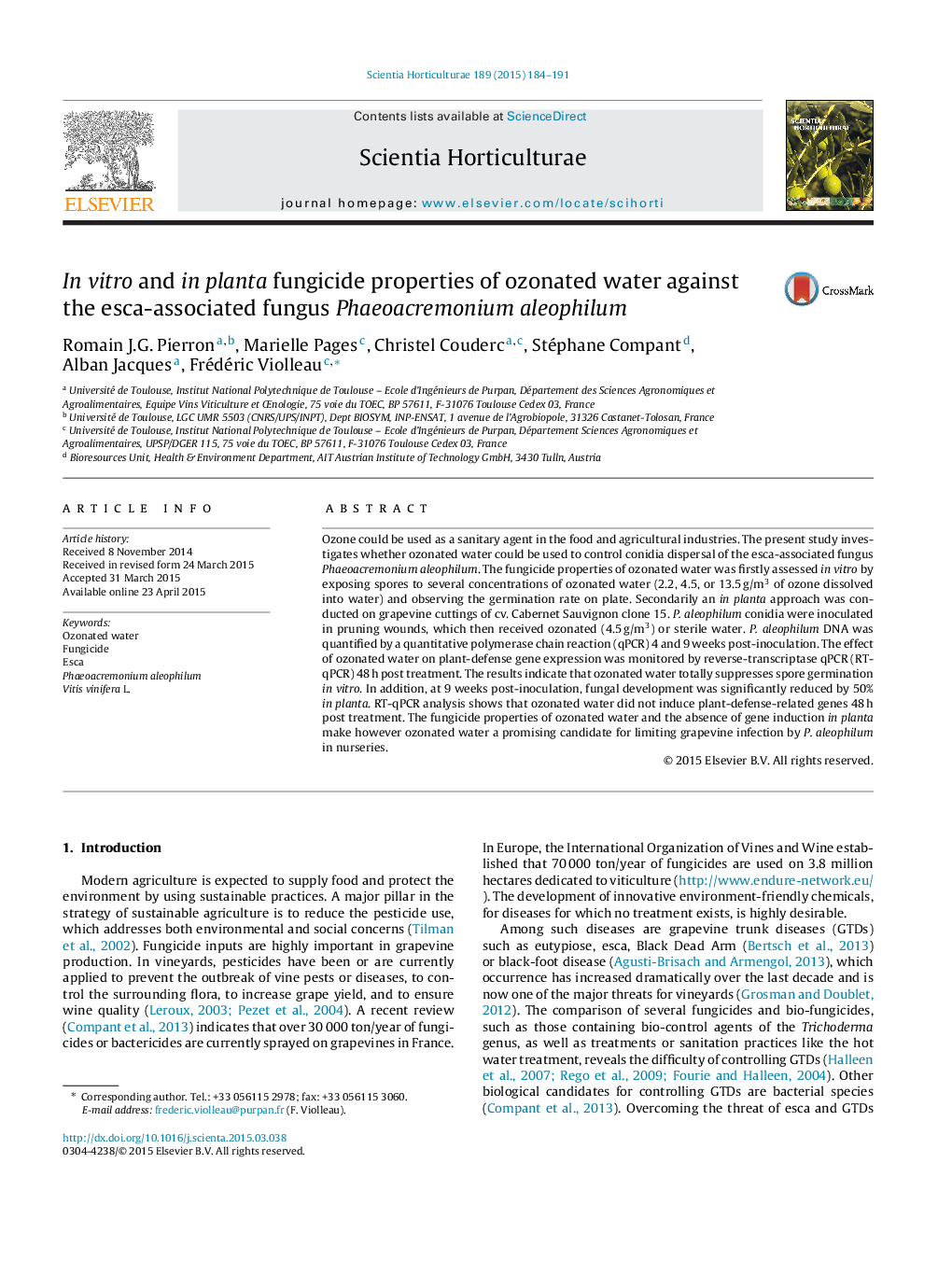| Article ID | Journal | Published Year | Pages | File Type |
|---|---|---|---|---|
| 6407054 | Scientia Horticulturae | 2015 | 8 Pages |
Abstract
Ozone could be used as a sanitary agent in the food and agricultural industries. The present study investigates whether ozonated water could be used to control conidia dispersal of the esca-associated fungus Phaeoacremonium aleophilum. The fungicide properties of ozonated water was firstly assessed in vitro by exposing spores to several concentrations of ozonated water (2.2, 4.5, or 13.5Â g/m3 of ozone dissolved into water) and observing the germination rate on plate. Secondarily an in planta approach was conducted on grapevine cuttings of cv. Cabernet Sauvignon clone 15. P. aleophilum conidia were inoculated in pruning wounds, which then received ozonated (4.5Â g/m3) or sterile water. P. aleophilum DNA was quantified by a quantitative polymerase chain reaction (qPCR) 4 and 9 weeks post-inoculation. The effect of ozonated water on plant-defense gene expression was monitored by reverse-transcriptase qPCR (RT-qPCR) 48Â h post treatment. The results indicate that ozonated water totally suppresses spore germination in vitro. In addition, at 9 weeks post-inoculation, fungal development was significantly reduced by 50% in planta. RT-qPCR analysis shows that ozonated water did not induce plant-defense-related genes 48Â h post treatment. The fungicide properties of ozonated water and the absence of gene induction in planta make however ozonated water a promising candidate for limiting grapevine infection by P. aleophilum in nurseries.
Related Topics
Life Sciences
Agricultural and Biological Sciences
Horticulture
Authors
Romain J.G. Pierron, Marielle Pages, Christel Couderc, Stéphane Compant, Alban Jacques, Frédéric Violleau,
